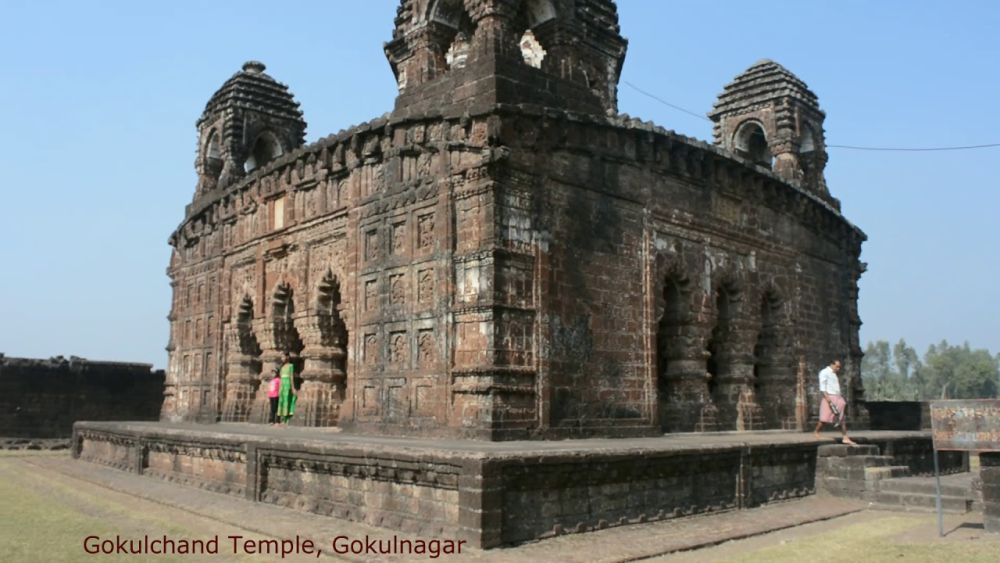

The renowned Gokul Chand Temple, nestled in the heart of Bankura district in West Bengal, India, is an epitome of terracotta artistry and a pillar of spiritual heritage. Predominantly crafted during the era of Malla rulers, this spectacular shrine has been a part of the region's cultural and historical tableau for centuries. However, it was not until the late 20th century that it gained significant recognition as a tourist attraction, with visitors flocking to witness its architectural brilliance and spiritual ambiance.
Established in the 17th century during the reign of the Malla dynasty, the Gokul Chand Temple stands today as a witness to the region's opulent past. Erected under the aegis of King Raghunath Singha II, this edifice is a testament to the synthesis of art, spirituality, and the social dynamism of its time. As a beacon of the unique Bishnupur Temple style, its terracotta plaques depict scenes from the epic Mahabharata, the holy Ramayana, and various facets of Lord Krishna's life, thus offering a treasure trove for historians and art enthusiasts alike.
The journey of Gokul Chand Temple as a mainstay in the tourism landscape of Bankura began gradually. With the gradual awareness and promotion of the Bishnupur Mela, a fair held annually in December, tourists started to diverge their attention towards the historic temples scattered around the region, including Gokul Chand. As scholars and connoisseurs of art started exploring these ancient relics, tourism gained momentum. State-sponsored initiatives, emphasis on cultural tourism, and the inclusion of Bishnupur's temples in the tentative list of UNESCO's World Heritage Sites have further popularized Gokul Chand Temple.
In recent years, tourism at the Gokul Chand Temple has embraced a number of trends responsive to the evolving interests and needs of modern travelers. Eco-tourism initiatives have been introduced, aimed at sustainable preservation and minimizing the environmental footprint of tourists. Moreover, experiential tourism, including rural and cultural immersion experiences, is becoming ever more popular, as visitors are increasingly interested in the authentic lifestyles, traditions, and cuisine of the region.
Another emerging trend is the promotion of virtual tours, especially in the wake of the global pandemic, allowing enthusiasts from across the world to explore the temple's intricacies online. The local government has also been investing in infrastructure improvements, providing better access and facilities to enhance the overall visitor experience.
For those planning to visit the Gokul Chand Temple, it is advised to coincide the trip with the Bishnupur Mela for a comprehensive cultural experience. While at the temple, respect for the place of worship should be maintained, and permission may be required for certain activities such as photography. The best time to visit is between October and March, when the weather is most pleasant for exploring the architectural heritage of the region.